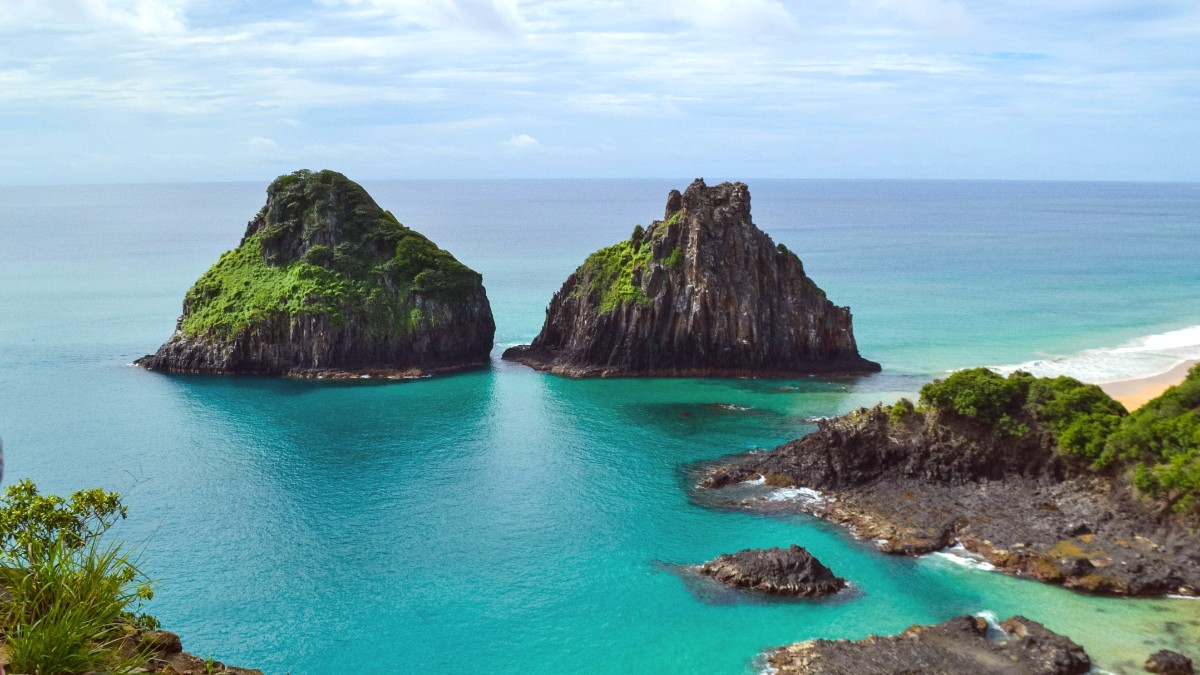
Brazil
The archipelago presents a mix of natural beauty and historical remnants. Its natural wonders bring a true draw.
The island’s protected status means access to many sites comes with visitor limits or entry fees.
The main historic village. It features charming colonial architecture, the Igreja de Nossa Senhora dos Remédios (Our Lady of Remedies Church), and remnants of the island's Portuguese and Dutch occupation, including old barracks and stone streets.
In addition to Fortaleza de Nossa Senhora dos Remédios, several smaller forts and redoubts dot the island. These include Reduto de Santana, Forte de Nossa Senhora do Boldró, and Forte de São Pedro do Boldró. These sites present historical context and additional viewpoints.
The island's port carries historical significance as the main landing point for explorers and settlers. It also features a shipwreck, Corveta Ipiranga, a popular dive site. The area around the port stays active, connecting the island to the mainland.
The true draw of Fernando de Noronha lies in its stunning natural landscapes, especially its world-renowned beaches and unique geological features.
World-renowned beach with golden sands and crystal-clear turquoise waters. Unique access through a ladder in a cliff. Iconic and beautiful.
A vast, wild beach, known as a significant nesting site for sea turtles. Strong currents, less for swimming, more for views. Wildlife watching.
Calm, shallow waters with abundant marine life, including sea turtles and small reef sharks. Offers excellent snorkeling. Marine life haven.
Expansive beach for surfing during the wet season. Features the iconic "Pedra do Morro do Pico". Surfing hotspot.
Lively beach popular for swimming, Stand-up paddleboarding, and sunset views. Beach bars and restaurants. Social and scenic.
Located near the port, this beach is good for snorkeling. It features a small shipwreck visible from the surface, adding interest. Easy access for divers.
A natural tidal pool teeming with diverse marine life. Access is only possible at low tide and with highly restricted visitor numbers to protect the ecosystem. Pre-booking via ICMBio and a PARNAMAR pass are necessary. Book well in advance.
A popular viewpoint for spectacular sunset views over the ocean. A favored spot for photographers and romantics.
Daily boat tours often stop at Baía dos Golfinhos (Dolphin Bay) to observe large pods of spinner dolphins in their natural habitat during early mornings. This provides a magical wildlife encounter.
The island's volcanic origins created stunning natural rock formations and caves.
Beyond the popular spots, Fernando de Noronha has quieter, less-trafficked experiences for those seeking a connection with the island.
These locations bring unique perspectives and tranquil moments away from the main tourist flow.
Museu do Tubarão (Shark Museum) Bar/Restaurant: Beyond the small museum, its adjacent bar and restaurant feature fantastic views, especially at sunset. They serve local snacks and drinks in a relaxed setting, an alternative to more crowded sunset spots.
Capim-Açu Trail: A more challenging and less-trafficked hiking trail. It leads to secluded beaches and natural pools on the eastern side of the island. It typically requires a certified guide and a PARNAMAR pass due to its difficulty and environmental sensitivity. This trail brings a true adventure for avid hikers.
While many travelers focus on descending to Sancho Bay, the upper viewpoint has a breathtaking panoramic view of the bay and the surrounding coastline without the ladder descent. This spot suits those with mobility considerations or travelers short on time, still providing iconic views.
This small beach near Vila dos Remédios is popular with locals and features natural pools at low tide. It is generally less crowded than other famous beaches.
A natural pool located within the Baía do Sancho area, often overlooked. It becomes visible at low tide and presents another opportunity for close-up marine life viewing away from the main Atalaia crowds.
Many of Fernando de Noronha's hidden gems, specifically natural pools, are only accessible or best visited during specific tide conditions.
For challenging trails or remote locations, a certified local guide makes navigation safer and more informative.
Your pousada host frequently has the most up-to-date information on hidden gems and current access conditions.
When visiting less-trafficked areas, adhere to all conservation guidelines to protect the fragile environment.
For a more solitary experience, attempt to visit hidden gems early in the morning or late in the afternoon.
Your actions directly impact the island's delicate ecosystem.
Consider purchasing a detailed map of the island upon arrival. This helps you locate various viewpoints and hidden trails.
Local maps often include updated information on access and conditions for protected areas.
Preparation for your trip enhances your experience.
Pack smart for island adventures.
Secure essential bookings and documents.
Understand local transport options.
Consider your budget and preferred travel style for transport choices.
Internet and phone access details.
Download offline maps and information before your trip.
Prioritize your well-being on the island.
Consult your doctor regarding vaccinations before travel.
Dial 190 for police assistance or emergencies.
Dial 192 for ambulance and medical emergencies.
Local tourism office contacts for general assistance.